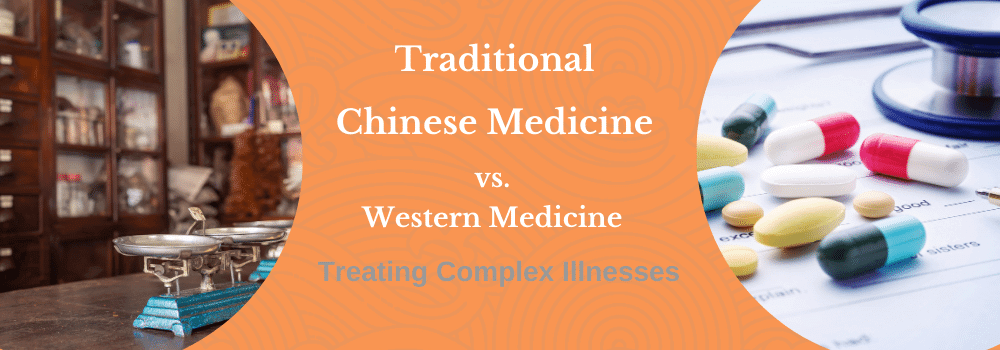
Traditional Chinese Medicine (TCM) vs. Western Medical Model for Complex Illnesses
In the realm of Traditional Chinese Medicine (TCM), complexity finds simplicity. While the Western medical model relies on tests and medications to alleviate symptoms, TCM focuses on restoring the body's functionality. This article explores the relief TCM offers to those with inexplicable, complex, chronic, multi-systemic conditions, contrasting the approach offered by TCM with that of the Western medical model. In this article, we explore Gu Syndrome, an ancient TCM diagnosis that may explain complex, treatment-resistant, chronic health conditions through the lens of "hidden pathogens" affecting both body and mind.
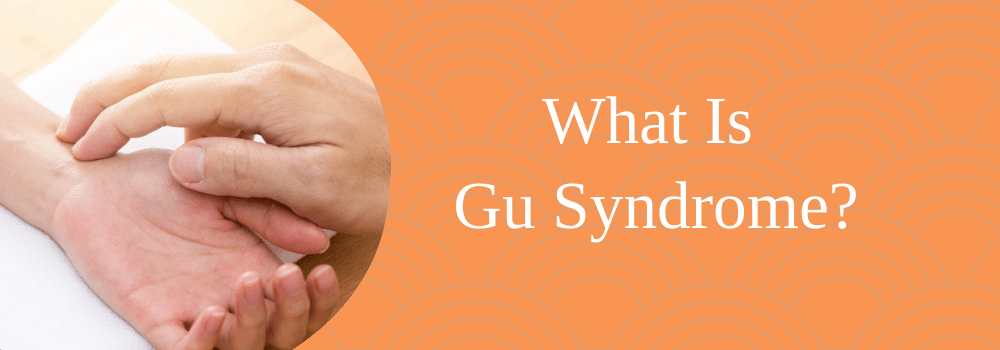
What is Gu Syndrome in Traditional Chinese Medicine?
In ancient Chinese medicine, Gu Syndrome referred to complex illnesses caused by parasitic infections. In modern culture, it symbolizes chronic, treatment-resistant conditions characterized by multi-systemic inflammatory symptoms. Gu Syndrome originates from external pathogen infections that overpower the immune system, taking root in the body and damaging the health and balance of its internal terrain. The symptom presentation is widespread, often migrating and multi-systemic, including but not limited to neurological, psychological, autoimmune, dermatological and digestive symptoms.
TCM theory originated in observation of the natural world and how external factors- wind, damp, heat, cold and dryness impact the environment. The human body was viewed as a microcosm of nature, susceptible to the same external factors in a similar way. A suspected diagnosis of Gu Syndrome may be assessed by observing how symptoms mimic and shift depending on the weather. How do symptoms change with exposure to the elements, whether indoors or out? The role dampness, heat, cold, wind or dryness play serves as a clue about the nature of the pathogen.
Common Symptoms of Gu Syndrome
- Neuromuscular symptoms: migrating joint pain, muscle soreness, weakness, temperature sensitivity
- Mental/emotional symptoms: fatigue, depression, cognitive issues, mood swings, insomnia, anxiety
- Autoimmune reactions: allergies, systemic inflammatory responses
- Low-grade chronic fever
- Digestive symptoms: bloating, diarrhea, abdominal cramps, nausea, food cravings, food intolerances, acid reflux, appetite swings
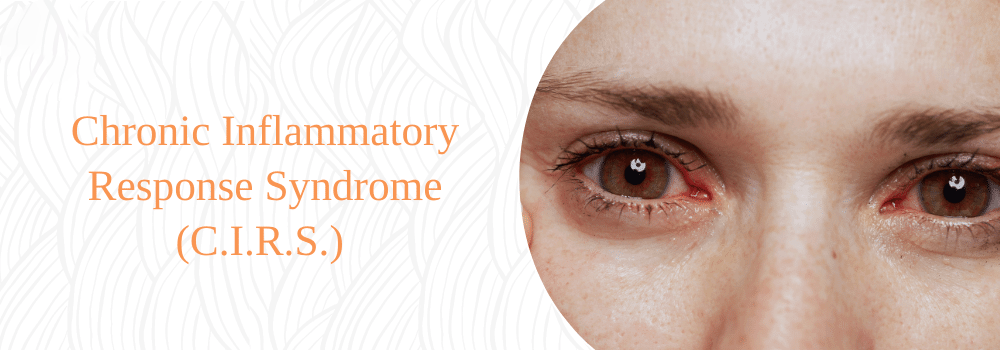
Chronic Inflammatory Response Syndrome (CIRS)
In the Western medical model, Gu Syndrome aligns with diagnoses like chronic Lyme disease, fibromyalgia, chronic fatigue syndrome, autoimmune disorders and long-haul Covid. Chronic Inflammatory Response Syndrome (CIRS), also known as Biotoxin Illness, is often the root cause of these complex illnesses, though it is a frequently overlooked diagnosis. CIRS presents with a wide range of symptoms arranged into 13 symptom clusters. One symptom in each cluster is considered a positive for the entire cluster, 6 "positive" clusters in children or 8 in adults is considered a tentative positive that warrants additional diagnostic testing with a physician knowledgeable in CIRS.
CIRS symptom clusters:
- Fatigue
- Weakness, decreased assimilation of new knowledge, aches, headache, light sensitivity
- Memory impairment, decreased word finding
- Difficulty concentrating
- Joint pain, morning stiffness, cramps
- Unusual skin sensitivity, tingling
- Shortness of breath, sinus congestion
- Cough, excessive thirst, confusion
- Appetite swings, difficulty regulating body temperature, increased urination
- Red eyes, blurred vision, sweats (night), mood swings, ice-pick pain
- Abdominal pain, diarrhea, numbness
- Tearing, disorientation, metallic taste
- Static shocks, vertigo
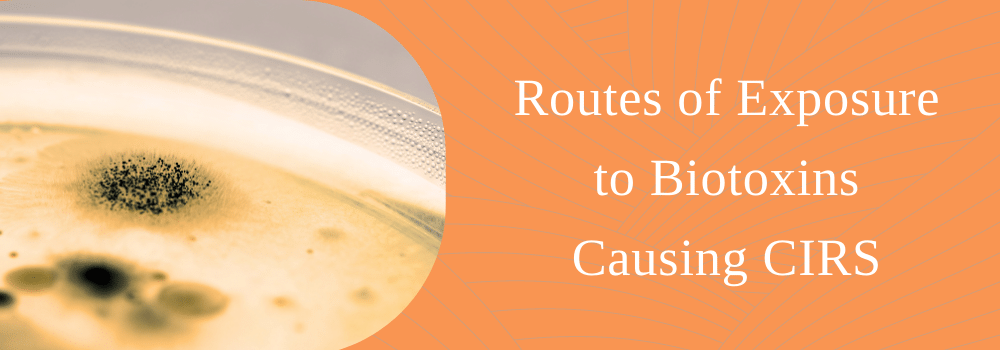
Routes of Exposure to Biotoxins causing CIRS
- Inhalation of water-damaged building toxins, prevalent in most buildings with poor remediation.
- Tick or spider bites carrying infections.
- Consumption of fish contaminated with Ciguatera toxin.
- Contact with water contaminated by toxins from fish kills or through aerosolized toxins.
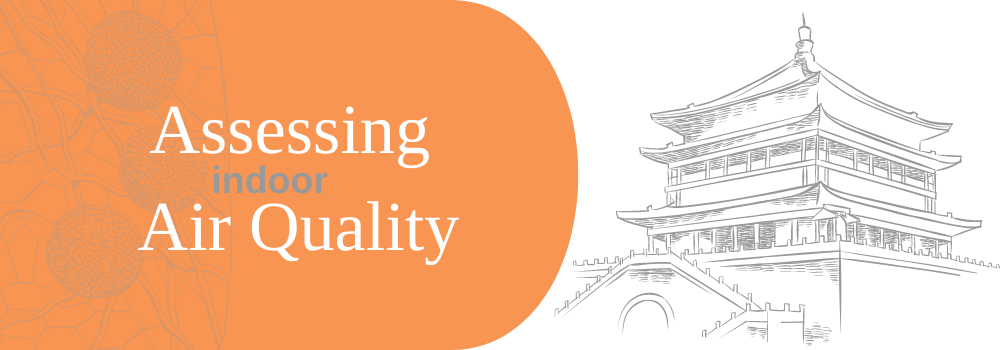
Assessing Indoor Air Quality
A key factor in regaining your heath following a CIRS diagnosis lies in an unexpected place: indoor air quality. To determine the source of water-damaged building toxins, sources of moisture must be identified, controlled and all decaying or rotted building materials removed using containment and negative pressure to avoid cross-contamination. Keep in mind that “water damage” does not always result from an obvious leak or flood, humidity over 55% and condensation can provide adequate moisture to fuel microbial growth.
In fact, many of the most potent water-damaged building toxins and toxin-producing molds result from condensation and high humidity, minor moisture sources that are as stealth and hidden as the pathogens they create. Finding them is not an easy task, especially in a world where plumbing pipes are hidden behind walls and our homes are full of areas that we rarely see - wall cavities, in attics, crawl spaces, under floor boards and within the insulation and drywall we use to construct our homes, the ideal "food" for microbial growth when combined with water.
Find the moisture
- Hire a company that specializes in finding hidden leaks using thermal imaging cameras, such as American Leak Detection. These services are often covered by insurance.
- Visual inspection. Look in your attic or crawl spaces for signs of water such as staining or compressed insulation. Examine your walls and exposed beams in storage areas, basements and attics for visible rot or discoloration. Examine walls and cabinets for areas with peeling, cracking, bubbling or discoloration.
- Monitor your appliances that use water. For example, your refrigerator can have a leaking water line, or an issue that is causing ice to form. Front-loading washing machines are prone to moisture buildup in the gaskets.
- Invest in a moisture meter to help assess the moisture content in your home's building materials. Abnormally high moisture in materials such a drywall indicates water intrusion from a hidden plumbing issue or penetration from outside. Our favorite moisture meter is from Klein Tools.
- A thermal imaging camera, which shows temperature variations through color, is an invaluable tool for anyone who wants to monitor their home for hidden moisture. Thermal anomalies can indicate the presence of active or historic moisture issues. Modern technology has given us options for thermal imaging cameras that attach to our phones and online educational tools to help interpret what we are seeing. FLIR makes an affordable, easy-to-use thermal imaging camera compatible with most cell phones.
Assess the toxins
Do not rely on the results of one test to give you the full picture of toxins you are dealing with. Air samples are often recommended to test for mold, though even the CDC discourages the use of air samples to assess indoor air quality. Water-damaged building toxins are difficult to test for, requiring a multi-pronged approach. This list covers many options, in order of affordability:
- Gravity plates. These are sold in packages that contain multiple plates that you can use in different areas of the home to assess “colony count.” One reliable company to buy plates from is Microbalance Health Products.
-
Envirobiomics sells DIY dust tests for fungi, bacteria and the toxins they produce. It is important to note that dust samples exclusively detecting mold can give a false sense of relief, as bacteria-related toxins such as actinomyces often grow faster and are found in test results when mold is not. This toxin is frequently associated with newly- constructed homes.
- A company favorite mold inspector is the canine variety. As awareness of the health threat posed by water-damaged building toxins grows, so has the accessibility of "mold dogs" trained in the same manner as other skilled dogs who sniff for drugs or weapons. Their highly tuned sense of smell allows dogs to find mold in places that even skilled mold inspectors cannot particularly when there are very limited signs of water damage related to issues such as slow roof or plumbing leaks or previous water events that have been concealed. Canine mold detectives are generally more affordable than traditional mold inspectors or environmental hygienists. Learn more: www.mold-dog.com
- An environmental hygienist is the appropriate professional to bring in to assess air quality. Be sure that the person you choose understands the health impacts of poor indoor air quality and plans to recommend an alternate company for any recommended remediation. It is a conflict of interest to use the same company for both testing and remediation.
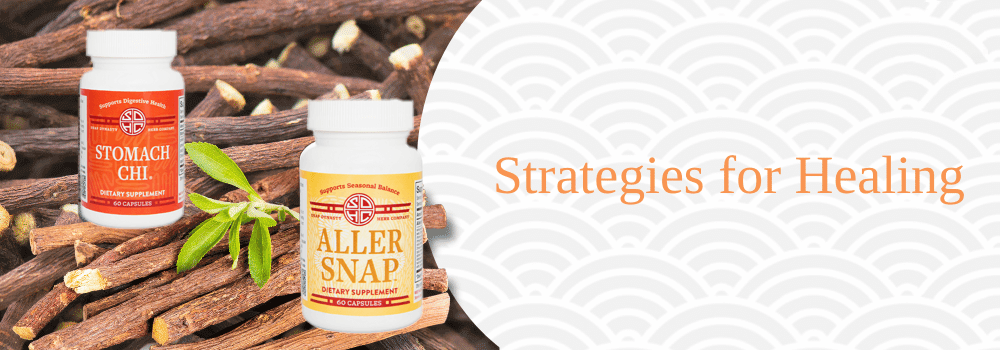
Strategies for Healing
Once indoor air quality is assessed and improved, a well-crafted approach is crucial to combat and outmaneuver the stealth pathogens of Gu Syndrome and achieve a full recovery. In practical terms, this means alternating treatment methods, anticipating the intelligence of the pathogens and accepting that they will eventually figure out a workaround that attempts to disarm your treatment strategy. It requires a systematic, multi-pronged, thoughtfully-designed approach.
From the perspective of TCM, supporting the digestive system by strengthening the spleen and stomach qi is critical. Systemic inflammation is calmed by moving stagnant liver qi. The function of the innate immune system's function can be supported by strengthening the Righteous Qi. Learn more in our articles about Liver Qi Stagnation, Spleen Qi Deficiency, The Importance of Righteous Chi and Understanding Yin Deficiency.
Conclusion
Understanding Gu Syndrome and its connection to CIRS provides valuable insights into recovery from chronic, treatment-resistant health issues. Incorporating TCM principles into the treatment approach, alongside addressing environmental factors, can be instrumental in finding lasting relief and restoring well-being.






Leave a comment
This site is protected by reCAPTCHA and the Google Privacy Policy and Terms of Service apply.